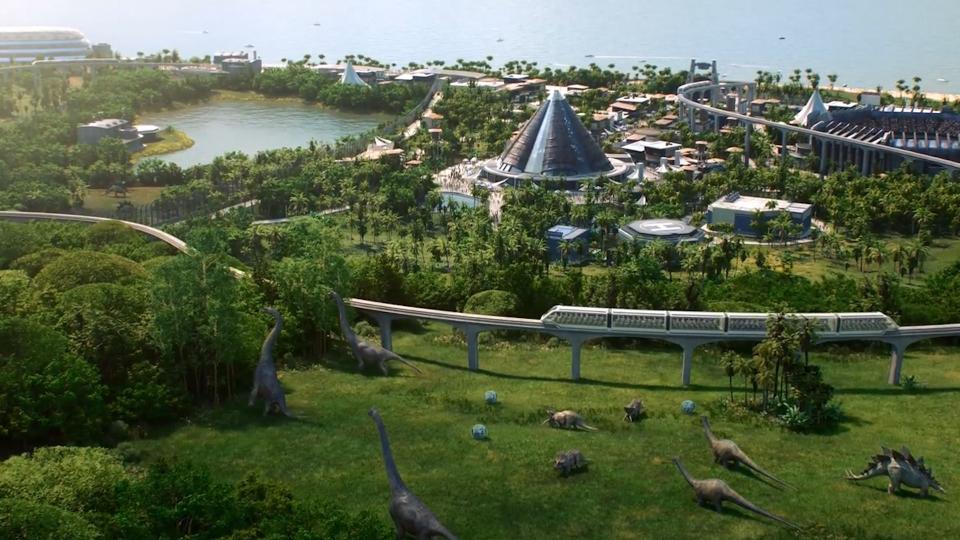Giant, newly discovered dinosaur was literally a huge weirdo

You're standing in a lush forest 230 million years ago in what is now Argentina.
You're alone among the Triassic shrubbery. Suddenly, an elephant-sized dinosaur comes lumbering your way through the overgrowth.
The dinosaur looks somewhat familiar — kind of like a much smaller brachiosaurus — but it's definitely different.
SEE ALSO: The real hero of 'Jurassic World: Fallen Kingdom' was this cute headbutting dinosaur
Instead of the straight legs, huge bodies, and long necks that have come to define the sauropods, this odd-looking creature has bent legs and a shorter neck, but it's definitely huge, if not as big as its much larger cousins.
It's... weird looking.
But here it is. And its name is Ingentia prima.
A study published earlier this week in the journal Nature Ecology & Evolution details the discovery of the first Ingentia fossil in Argentina.
The new finding reveals that giant dinosaurs evolved at least 30 million years earlier than sauropods like brachiosaurus or titanosaurus, changing our understanding of the huge beasts that lorded over our planet before we came along.

Image: Jorge A. González
"This is a really unexpected new discovery, and I think one of the most important new dinosaurs of the last few years," paleontologist Steve Brusatte, who wasn't involved in the new study, said via email.
Initially, scientists thought that huge dinosaurs evolved in a very specific way. Basically, researchers have suggested that large dinosaurs needed to have straight legs with bones that grew at a steady rate over a relatively long period of time.
Ingentia throws a wrench into that model of giant dino evolution.
The newly discovered dinosaur not only walks on bent legs, but those bones appear to have grown at a more irregular pace, according to the new study.
Earlier dinosaurs in the sauropodomorph group walked on their hind legs and were small, but Ingentia appears to be something in between those smaller dinosaurs and the much larger brachiosaurus or titanosaurus, which existed millions of years later.
"Sauropodomorph dinosaurs are a wildly diverse group that originated at the very beginning of the age of dinosaurs and survived until the moment that dinosaurs went extinct," Kristina Curry Rogers, a paleontologist at Macalester College in Minnesota, said via email.
"...The group is probably best known for their recognizable body plan - tiny head, long neck, columnar limbs, huge body, and long tail. Since nearly all later sauropods have this basic body plan, discovering animals that hint at how and when such a plan first evolved is exciting," Curry Rogers, who wasn't involved in the new study, added.
"This discovery helps shed light on when the different traits that we think led to the extreme gigantism in sauropods first evolved — it's important because it helps connect some dots between earlier little sauropodomorphs and the real giants that ruled the Mesozoic later on."
The newfound dinosaur fits into a subgroup called the lessemsaurids, distant cousins of the better-known sauropods.
The new study looks at both Ingentia and another lessemsaurid, Lessemsaurus sauropoides, which also lived in what is now Argentina.
"We all need to learn a new dinosaur name, the lessemsaurids, because these were the first dinosaurs to grow to huge sizes of about 10 tons," Brusatte said.
"They got big back in the Triassic Period, about 215 million years ago. This is much earlier than we thought dinosaurs got so big. So, the lessemsaurids force us to rethink when, why, and how some dinosaurs got so monstrous."
At the moment, it's unclear exactly why these dinosaurs did grow to their huge size earlier than initially expected.
And the truth is, there may be no reason for the gigantism at all.
"Who knows what purpose evolving a larger body size may have had — usually things evolve by chance, but work well enough in an environment to get passed down and stick around in populations of organisms," Curry Rogers said.
"But, sometimes being larger can be a helpful defense against predators — and growing fast to gain that bigger body size makes it possible to outpace those things in your ecosystem that might try and eat you if you stay small for a long time."
WATCH: Jeff Goldblum is back in the amazing 'Jurassic World Evolution' video game


